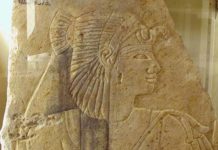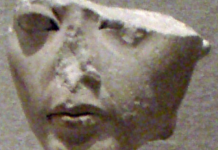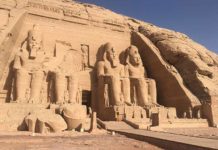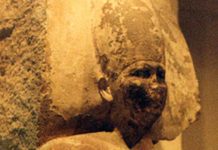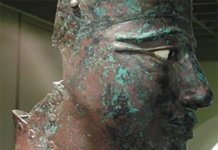The period between 1675 and 1553 BC, Egypt’s great glories in the past, saw decline under a succession of ineffective, as well as weak unknown kings.
Some authors on Ancient Egypt even date the next ‘Intermediate’ period from the end of the twelfth dynasty.
An Era of Decline
The Fifteenth and Sixteenth Dynasties were thus foreign ones, founded by one Salitis. They did not impose a foreign system of government and assimilated themselves to the existing Egyptian system. This aceptance o previous practice even extended to the keeping of official records in Egyptian script, using Egyptian royal titles and copying Egyptian styles in their art.
Their kings called themselves ‘son of Ra’ and they followed a cult of seth, although they also brought in the worship of the Near Eastern deities Baal and Teshub, who became assimilated with Seth. They also worshipped the moon goddess Astarte. Their first capital city was at Avaris, on the Delta shore, from there they moved to Memphis.
Egyptian resurgence started in Thebes, around 1680 BC, where a branch of the Thirteenth Dynasty arose, which became the Seventeenth Dynasty, existing with the Hyksos Dynasty. They were rivals for almost a century prior to warfare breaking out on a large scale under the Theban monarch Seqenenre, killed in the conflict, and then his son, Kamose.
Kamose had little help and had to use mercenary tribesmen of the medjay. He gained some ground from the Hyksos king Apophis, but it was his successor, Ahmosis I, who broke the Hyksos, storming first Memphis and then Avaris, as the Egyptians had finally mastered the art of using chariots in warfare.
The peasants continued to till the soil and maintain the traditional way of life. These peoples possessed skills that the Egyptians had never found it necessary to acquire, including ironwork and the mastery of the horse. They fought from chariots, giving them speed as well as mobility that the Egyptian infantry had no way of countering.
Gradually, the Asiatic communities combined and expanded until they constituted an invasion force with their own hierarchy and objectives. The process took some fifty years, down to 1675 bc, by which time the invaders had taken control of the kingdom of Egypt.
Foreign Rulers
For the first time, the Egyptians found themselves under the rule of foreigners. In fact, the thirteenth Dynasty did not disappear for a further twenty years, but it controlled less and less of the land, becoming less and less consequential, until it simply disappeared from history followed by a short – lived, local Fourteenth Dynasty.
Sources:
- Crystal, D (2003) The Penguin Concise Encyclopedia, Penguin Group, London
- Geddes and Grosset (2004) Ancient Egypt Myth & History, The Gresham Publishing Company, New Lanark
- Grimal, N (1992) A History of Ancient Egypt, translated by I Shaw, Blackwell, Oxford
- Moore, R I (1999) Philip’s Atlas of World History, Chancellor Press, London
- Shaw, I (2000) The Oxford History of Ancient Egypt, Oxford University, Oxford
- Tyldesley, J (2003) Pyramids – the real story behind Egypt’s most ancient monuments, Viking, London
- Verner, M (2002) The Pyramids – Their Archeology and History, translated by S Rendall, Atlantic Books, London



